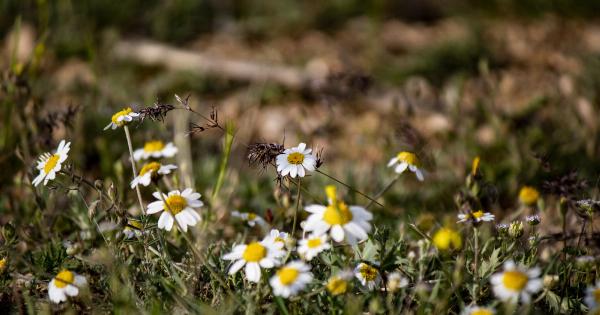Green spaces, such as parks, gardens, and outdoor recreational areas, play a vital role in enhancing the lives of children and communities across the globe.
These natural environments provide a myriad of benefits that contribute to physical and mental well-being, community engagement, and educational opportunities. From promoting healthier lifestyles to encouraging social interactions and fostering a sense of belonging, the positive impacts of green spaces are undeniable.
In this article, we will explore the various ways in which green spaces contribute to the growth and development of individuals and communities.
1. Physical Health and Fitness
Green spaces offer children and communities opportunities for physical activity and exercise. Regular physical activity is crucial for maintaining a healthy lifestyle and preventing obesity and associated health conditions.
In green spaces, children can engage in a wide range of activities such as running, cycling, playing sports, and climbing, which help improve cardiovascular health, strengthen muscles, and develop coordination and motor skills. Additionally, exposure to natural sunlight in these outdoor settings promotes the production of vitamin D, which is essential for strong bones and a healthy immune system.
2. Mental Health and Well-being
Spending time in green spaces has proven to have positive effects on mental health and well-being. Natural environments promote relaxation, stress reduction, and overall mental rejuvenation.
Research has shown that exposure to green spaces can reduce anxiety, depression, and attention-deficit disorders in children and adults. The peacefulness and tranquility provided by these green oases offer a respite from the demands and pressures of urban life, allowing individuals to recharge and rejuvenate their mental faculties.
3. Cognitive Development
Green spaces offer a conducive environment for cognitive development, particularly for children. Interacting with nature stimulates curiosity and creativity, enhances problem-solving skills, and improves concentration and focus.
By engaging in imaginative play and exploring the natural world, children develop critical thinking abilities, learn to appreciate biodiversity, and cultivate a love for the environment. Green spaces also provide opportunities for educational activities, such as learning about plant and animal life, environmental conservation, and sustainability.
4. Community Engagement
Green spaces serve as meeting points and gathering spaces for communities, fostering social interactions and relationship-building. These spaces encourage people from diverse backgrounds to come together, creating a sense of community and belonging.
Community events, such as concerts, festivals, and picnics, organized in green spaces promote social cohesion and integration. Moreover, green spaces often serve as venues for farmers’ markets, where local produce and handmade goods are showcased, thereby supporting local businesses and economies.
5. Environmental Stewardship
Access to green spaces cultivates a sense of environmental stewardship and responsibility among individuals and communities.
By experiencing the beauty and benefits of nature firsthand, people develop a greater appreciation for the environment and are more likely to engage in sustainable practices. Green spaces serve as reminders of the importance of protecting and preserving natural resources and biodiversity.
Children who have access to green spaces from an early age are more likely to grow up to be environmentally conscious individuals who actively contribute to the well-being of the planet.
6. Improved Air Quality
Green spaces contribute significantly to improving air quality in urban areas. Through the process of photosynthesis, plants and trees absorb harmful pollutants and release oxygen, resulting in cleaner and fresher air.
This is particularly important in densely populated cities, where air pollution can have detrimental effects on respiratory health. Increasing the number of green spaces not only enhances the aesthetic value of urban landscapes but also promotes healthier air quality, thus benefitting the entire community.
7. Climate Mitigation
Green spaces play a significant role in mitigating the effects of climate change.
Trees and vegetation in parks and gardens help to reduce the heat island effect in urban areas, where the concentration of concrete and buildings can lead to higher temperatures. The shade provided by trees and the cooling effect of vegetation contribute to creating a more comfortable and temperate environment.
Additionally, green spaces act as carbon sinks, absorbing carbon dioxide and other greenhouse gases, thereby reducing the overall carbon footprint and helping combat climate change.
8. Educational Opportunities
Green spaces offer valuable educational opportunities for children and communities. Nature-based learning has been found to be effective in enhancing educational outcomes.
These spaces provide hands-on experiences that stimulate curiosity, promote experiential learning, and connect individuals with the natural world. Schools and educational institutions can utilize green spaces as outdoor classrooms, where students can learn about ecology, biology, and environmental sciences.
Furthermore, botanical gardens and nature reserves serve as living laboratories, offering interactive exhibits and workshops that educate the public about native flora and fauna, conservation efforts, and sustainable practices.
9. Crime Reduction
Studies have shown that the presence of green spaces can contribute to a reduction in crime rates within communities. Well-maintained and accessible parks create a sense of ownership and pride among residents, helping to deter criminal activities.
The increased social interactions and surveillance that occur in these spaces act as a natural deterrent to potential offenders. Furthermore, green spaces provide alternative recreational options for young people, diverting their attention away from engaging in delinquent behaviors.
10. Economic Benefits
Green spaces generate numerous economic benefits for communities. The presence of well-maintained parks and gardens enhances property values, making the surrounding areas more attractive to potential residents.
Additionally, green spaces create job opportunities in sectors such as landscaping, maintenance, and tourism. The promotion of ecotourism, where visitors are drawn to areas rich in natural beauty and biodiversity, can stimulate local economies and contribute to sustainable development.
In conclusion, green spaces play a vital role in enhancing the lives of children and communities.
These precious natural areas provide a wide range of benefits, from promoting physical and mental health to fostering community engagement and providing educational opportunities. It is essential to prioritize the creation and preservation of green spaces in both urban and rural areas, ensuring that future generations can enjoy these valuable resources.
By investing in green spaces, we can pave the way for healthier, happier, and more sustainable communities.































